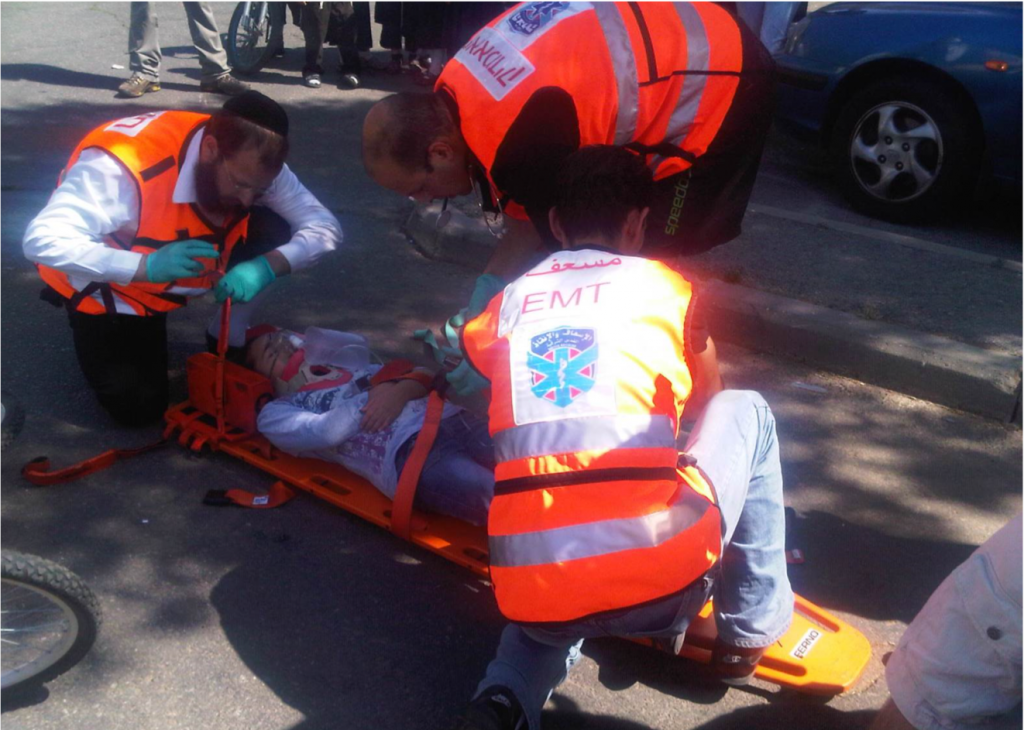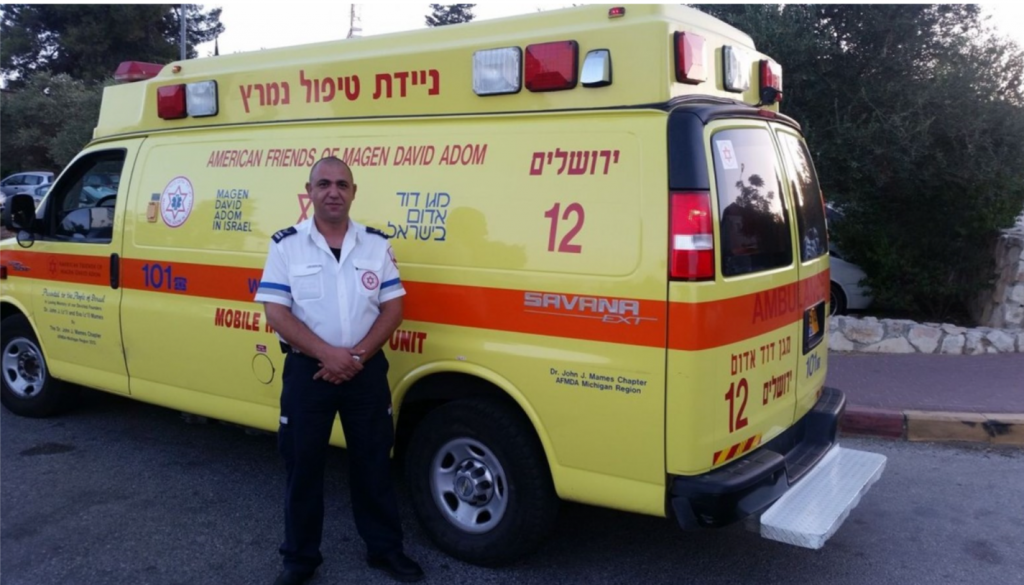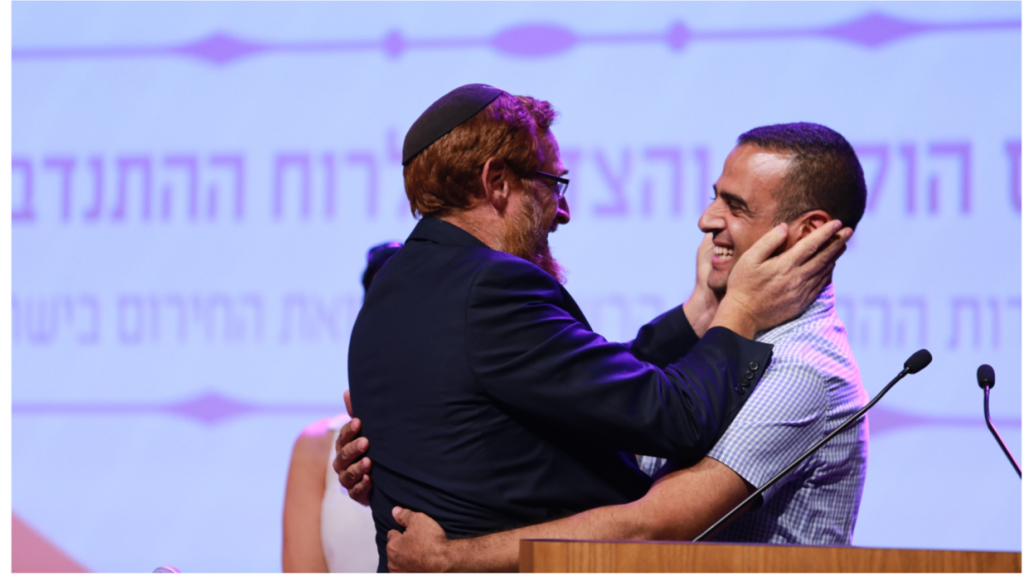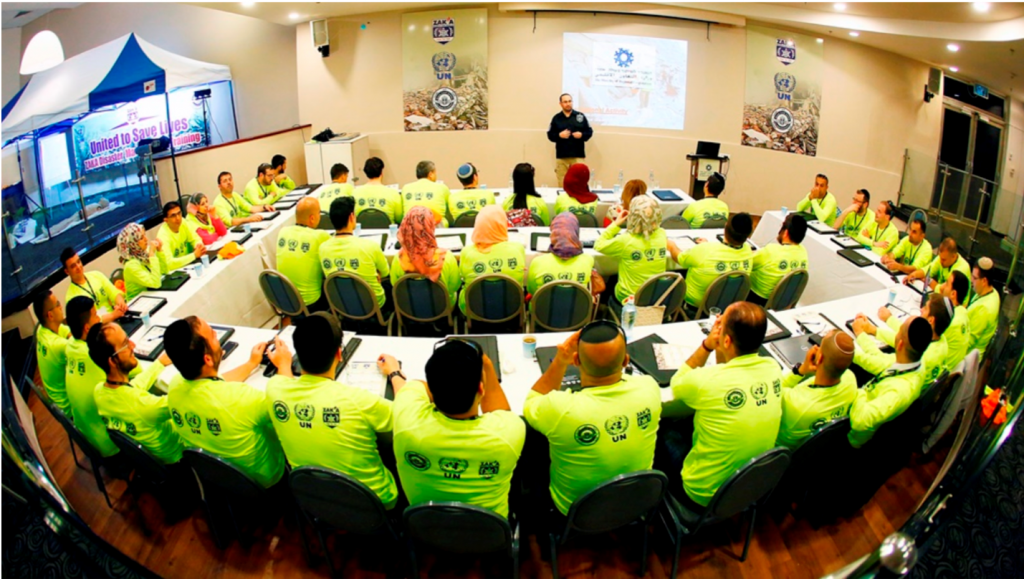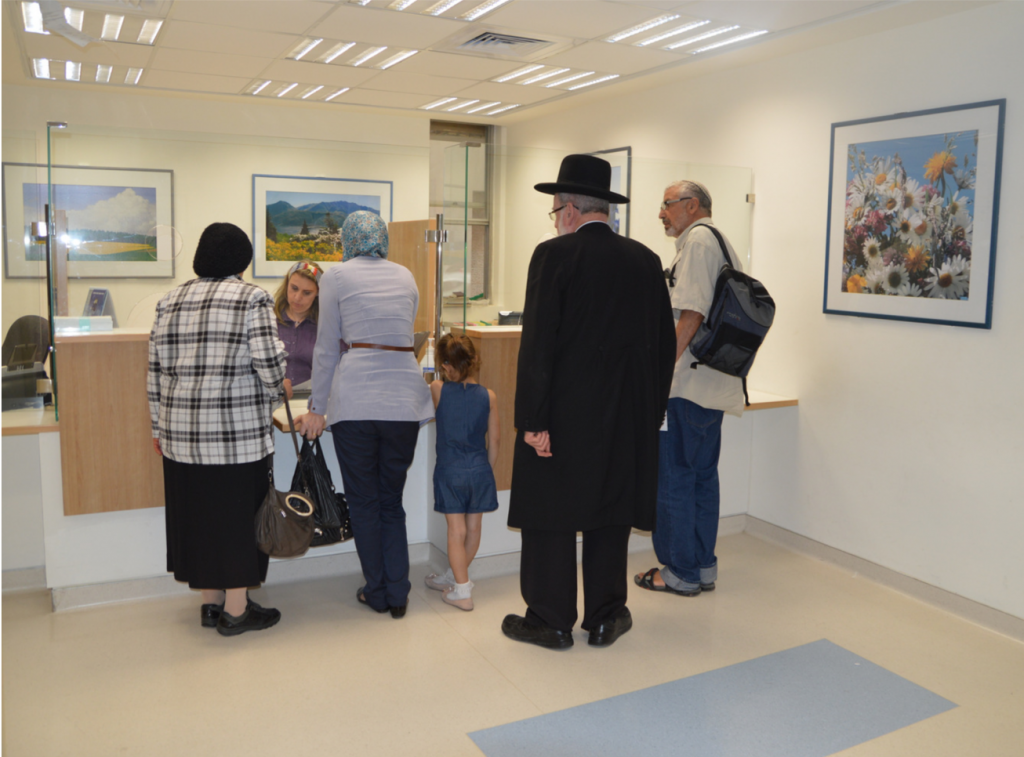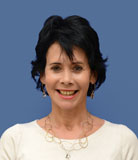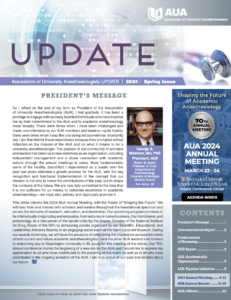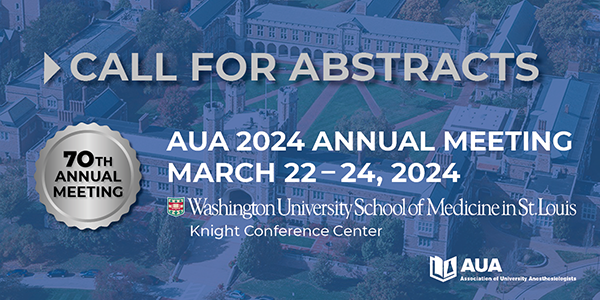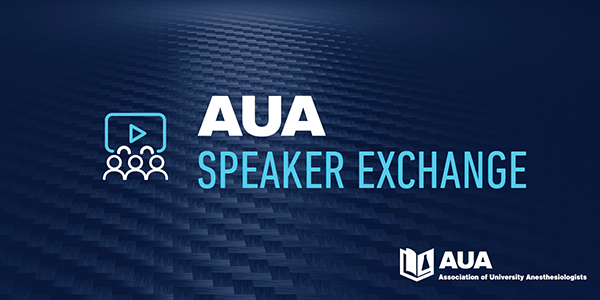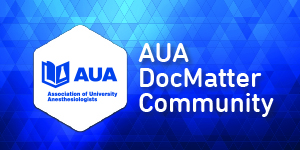Unity in Medical Practice Serves as an Inspiration
Preface
In this issue of AUA Update, Professor Idit Matot, who is a leader of the academic anesthesiology community from Israel, has written an article focusing on unity in medical practice in the region. Although it is not the main thrust of the piece, the article does touch on the controversial decision by the current U.S. president to move the U.S. embassy to Jerusalem. We hope that this controversy will not detract from the spirit of the article. The author’s intention was to write a motivational piece, showcasing some of the inspiring medical work conducted in Israel. The theme underpinning the article is that the health-care system “in Israel recognizes no ethnic or religious boundaries.” A major incentive is also to foster collaboration between Israeli institutions and other academic institutions around the world.
The AUA is a non-political organization, and the leadership of the AUA recognizes that our members have diverse political perspectives. There might be AUA members who agree with the president’s decision regarding the embassy, and there are also probably AUA members who are strongly opposed. As an organization, the AUA takes no position on this controversy. Regardless, we believe that this article on the healthcare system in Israel, highlighting cooperation among those with different backgrounds, will be of interest to our members. We welcome articles from any academic anesthesia program in any country in the world. Please send us articles about your academic medical practice.
Unity, to be real, must stand the severest strain without breaking - Mahatma Gandhi
President Donald Trump officially declared U.S. recognition of Jerusalem as the capital of Israel and plans to relocate the U.S. embassy from Tel Aviv to Jerusalem. While this declaration, not unexpectedly provoked polarized reactions, some of which debate the mere existence of Jerusalem as the undivided capital of the Jewish state, the facts with respect to medical practice, service and education indeed reflect a unified city of Jerusalem.
The health-care system in Israel recognizes no ethnic or religious boundaries, with admirable cooperation between Israeli Arabs and Israeli Jews. Medical care provided in Jerusalem is guided only by the principle of maintaining health and saving lives. Jerusalem is one-undivided city treating Jews, Christian and Muslims alike. Multi-level efforts are carried out to supply the entire population of Jerusalem with the most advanced medical therapy (in the community, in the hospitals and by the emergency systems) and educational programs.
The best, but not only example, is Israel’s first-responders that form a kaleidoscope of cultures. Israeli civilian emergency units, Magen David Adom (MDA, Israel’s primary emergency medical services), United Hatzalah ("united rescue", a free, volunteer-based emergency medical service organization based in Jerusalem) and ZAKA (voluntary community emergency response teams assisting primarily to identify victims of disasters, accidents, terrorism) employ Jewish (orthodox and secular), Muslim, Christian, and a few Druse volunteers to aid victims of accidents, terrorism and illness.
A security camera at the Jerusalem headquarters of United Hatzalah, on November 2017 spotted two command volunteers Eliyahu Cholak and Muhammad Salach – side by side, each of them in black trousers and white shirts, one a Jew and the other a Muslim praying. As noted by United Hatzalah president and founder Eli Beer and reported by Judy Siegel-Itzkovich from the Jerusalem Post: “Here, cooperation and friendships are formed by people of different faiths working together to achieve a common goal. They’ve learned how to put their differences aside and work together.”
Also, during a wave of terror attacks, an MDA crew consisting of the ultra-Orthodox men Yisrael Arbus and Haggai Bar-Tov and Fadi Dikdik from Shuafat, an Arab neighborhood of Jerusalem, told a Yedioth Ahronoth (newspaper) reporter, “We are like brothers.” Dikdik is responsible for the whole East Jerusalem area for MDA and speaks Arabic, Hebrew, English, Yiddish and Russian. He has worked with MDA for many years and recruits teens from Shuafat to take MDA’s first-aid course. Two initiatives by MDA give further evidence of the unity between Israelis and Arabs characteristic of the medical services in Jerusalem. The MDA Jerusalem station is home to a unique, moving course. Weekly, the station hosts participants of the MDA EMT and Ambulance Drivers’ course. Soon, these first-responders will become an inseparable part of MDA volunteers operating in the capital. The uniqueness of the course stems from the fact that all of its participants belong to the Arab sector, residents of Eastern Jerusalem. As of February 2017 MDA initiated Arabic-language courses to volunteers in Jerusalem in order to better serve the city’s Arabic-speaking population. This initiative, which was proposed by MDA medic Ziad Jaadla, is an additional step forward to bridge cultures and promote collaboration.
At a recent Knesset (2016) ceremony saluting Israel’s emergency medical first-responders and search-and-rescue personnel, Parliamentarian Yehudah Glick, who survived an Arab shooting attack several years ago, spontaneously climbed onto the podium to embrace Kabahah Muawhiya, an Arab-Israeli volunteer EMT with national volunteer emergency medical services organization United Hatzalah of Israel. “United Hatzalah is not just about emergency first response and medical rescuing, but it is literally uniting people from different walks of life and different religions,” Muawhiya told the Knesset members. Recently, ZAKA held a three-day disaster preparedness training course for Israeli and Palestinian volunteers under the auspices of the Ministry for Regional Cooperation, in partnership with the Palestinian volunteer organization Green Land Society for Health Development.
These instances are by no means unique examples of Israeli - Arab collaboration in medical treatment in Jerusalem. Referral to Israeli hospitals for medical and surgical care not available locally continues on a wide scale. Both Hadassah and Shaarei Tzedek medical centers, the two major hospitals in Jerusalem, have long track records of treating Arabic patients. Hundreds of thousands of patients - local Arabs from Jerusalem and its vicinity, Palestinians, women in labor and children are treated in both hospitals. Seventy percent of the children undergoing dialysis in Shaarei Tzedek are Arabs, and about a quarter to one third of hospitalizations in both hospitals come from the Arab population in the city. Even when it comes to transplants, people from different nationalities and religions donate their organs willingly – and this demonstrates best what human brotherhood is all about. For example, after four years on dialysis waiting for a kidney transplant, a 41-year-old man from Bethlehem received a new kidney from an Israeli family whose son, 38 years old, had been declared brain dead following stroke. The successful procedure was conducted at Hadassah-Ein Kerem. Other examples: 152 injured patients were transferred from the Palestinians authorities to Hadassah Ein Kerem for treatment during the years 2015-17, with additional 52 injured suspects of terrorism that suffered injury (data from Prof Rivkind).
The workforce in both Hadassah and Shaarei Tzedek – physicians, nurses, administrators etc – also reflect the population of the city – all work in harmony and united in their work for the sake of the patients. Additionally, professional medical training (in part through The Peres Center for Peace), for Palestinian doctors, nurses, and paramedics is taking place through residency/ fellowship programs, training sessions, different medical courses and medical conferences.
Physicians are professionally and legally obligated to help those in medical need regardless of the patient’s political status. The care rendered by all the professionals involved is free of prejudice because the medical professional code mandates that we rise above our personal biases. This has long been the practice in Jerusalem.
About 3,000 years ago, King David conquered Jerusalem from the Jebusites and established the capital of his kingdom there. The city continued as the capital of the kingdom for 400 years, until its first destruction at the hands of the Babylonians in 586/7 BCE. This period is known as the First Temple period, and is documented in the Biblical books of Samuel, Kings, Chronicles and the various prophets. A clay seal from the First Temple Period, inscribed in ancient Hebrew script, was unearthed in the Israel Antiquities Authority excavations at the Western Wall Plaza in Jerusalem this month. According to the excavator, Dr. Shlomit Weksler-Bdolah, "the Bible mentions two governors of Jerusalem, and this finding reveals that such a position was actually held by someone in the city some 2700 years ago." In the Bible, the role of "governor of Jerusalem" appears several times. In Kings I, Joshua is listed as the governor of the city in the days of Hezekiah, and in Chronicles II, Maaseiah is noted as governor of the city in the days of Josiah. In 2015, a rare 3,000-year-old clay seal, from the time of King David in the 10th century BCE was discovered by a 10-year-old Russian volunteer at Jerusalem’s Temple Mount Sifting Project in 2015. Jerusalem is also a sacred site in Islamic and Christian tradition. Born in 570 AD, Prophet Muhammad founded the Islam, and the Dome of the Rock, an Islamic sacred shrine in Jerusalem, built on the Temple Mount, is the third holiest site in Islam, after the mosques of al-Haram in Mecca and al-Nabawi in Medina. It is believed this is where Muhammad ascended into heaven and was given the second pillar of Islam, to pray five times a day, from Allah, which is still used today. Jerusalem is the sacred heart of the Christian story. This was where Christ preached, ate the Last Supper with his disciples before his death, where he was arrested, put on trial, condemned to death, crucified, and died. It is where his tomb was found empty and he rose from the dead. Jerusalem, then, is a place of deep sorrow, utter desolation but also of hope and redemption. The city of Jerusalem is one of the oldest cities in the world, full of fascinating historical sites that are constantly being re-discovered because of the continuous archeological efforts in many of them. I invite you to explore Jerusalem and unfold the many layers, and on a personal level – I encourage you to use my email for personal advice for your tour. If you wish to combine your visit with a professional one – you are more than invited to pay a visit to my department.
The unity seen in medical practice can be a model and inspiration for unity and collaboration between cultures and sub- populations of the Middle East in all areas of life.
